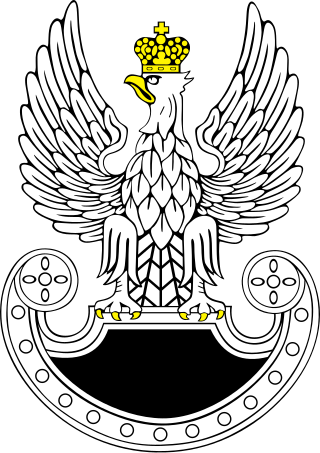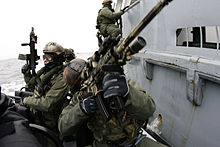
Operation Anaconda or the Battle of Shah-i-Kot was a military operation that took place in early March 2002 as part of the War in Afghanistan. CIA paramilitary officers, working with their allies, attempted to destroy al-Qaeda and Taliban forces. The operation took place in the Shah-i-Kot Valley and Arma Mountains southeast of Zormat. This operation was the first large-scale battle in the post-2001 War in Afghanistan since the Battle of Tora Bora in December 2001. This was the first operation in the Afghanistan theater to involve a large number of U.S. forces participating in direct combat activities.

The 160th Special Operations Aviation Regiment (Airborne), abbreviated as 160th SOAR (A), is a special operations force of the United States Army that provides helicopter aviation support for special operations forces. Its missions have included attack, assault, and reconnaissance, and these missions are usually conducted at night, at high speeds, low altitudes, and on short notice.

Joint Task Force 2 is Canada's Tier 1 special operations force mandated with protecting Canadian national interests and combating terrorism threats both domestic and abroad. JTF 2 serves under the Canadian Special Operations Forces Command of the Canadian Armed Forces and is typically compared to American Delta Force and SEAL Team Six, the British Special Air Service, the Australian Special Air Service Regiment and 2nd Commando Regiment, and the New Zealand Special Air Service. Most information concerning JTF 2 is classified and is not usually commented on by the Canadian Armed Forces or the Government of Canada.

The Kommando Spezialkräfte (KSK) is the special forces military unit and a large brigade-level unit of the German Armed Forces (Bundeswehr) for special operations and commando warfare, reconnaissance, counterterrorism, combat search and rescue as well as military advisor. The KSK reports to the Rapid Forces Division (DSK) and is stationed in the Graf Zeppelin barracks in Calw, Baden-Württemberg.

The Marine Corps Special Operations Command Detachment One, also simply known as Det One, was a pilot program of attaching a permanent unit of the United States Marine Corps to the United States Special Operations Command. It was commanded by Col. Robert J. Coates, former commanding officer of 1st Force Reconnaissance Company. Det One was activated on 19 June 2003 and had its headquarters at Camp Del Mar Boat Basin in Camp Pendleton, California. It was disbanded in 2006 and succeeded by the permanent United States Marine Corps Forces Special Operations Command (MARSOC).

Task Force 20 is a temporary combat force designation that has been used several times and may still be used by separate parts of the United States armed forces. The longer-established iteration was a part of the United States Second Fleet in the Atlantic from after the Second World War. This was part of the formal United States Military Communications-Electronic Board system.
The Battle of Debecka Pass on 6–7 April 2003, sometimes known as the Battle of Debecka Ridge or Debecka Crossroads, or otherwise referred to as the Alamo of the Iraq War, was a successful operation launched by U.S. Special Forces to secure a major crossroads near the village of Debecka, between Mosul and Kirkuk in northern Iraq. It was notable for its use of the Raytheon/Lockheed-Martin Javelin anti-tank missile. The weapon demonstrated how lethal and crucial technology can be in determining the outcome of a battle. The light unarmored SOF and Peshmerga (KDP) force faced a mechanized force of Iraqi infantry and tanks. The US and KPD force was able to defeat the Iraqi mechanized infantry & tank force with combined air-to-ground strikes, superior maneuvering, and the use of the Javelin missiles.

The Special Forces Support Group (SFSG) is a special forces unit of the British Armed Forces. The SFSG was formed officially on 3 April 2006 to provide support to the Special Air Service, the Special Boat Service and the Special Reconnaissance Regiment on operations. It is a tri-service unit, composed of the 1st Battalion, The Parachute Regiment, a company of Royal Marine Commandos, and a flight (platoon) from the Royal Air Force Regiment.

Following the terrorist attacks of September 11, 2001, several nations took on Al-Qaeda and the Taliban during Operation Enduring Freedom (OEF) in Afghanistan. OEF was the initial combat operations starting on 7 October 2001, in the wake of the 11 September attacks on the United States, and during 2002 and 2003.

Operation Viking Hammer was an unconventional warfare operation during the Iraq War which took place in northern Iraq, commonly known as Iraqi Kurdistan. The goal of the operation was to eliminate Ansar al-Islam and dismantle the Islamic Emirate of Byara. Ansar al-Islam was established by former Al-Qaeda members in 2001 as a Kurdish Salafist movement that imposed a strict application of Sharia in villages it controlled.

The Special Troops Command is the special forces command of the Polish Armed Forces. The command was formed in 2007 and is the fourth military branch of the SZ RP.

Jednostka Wojskowa Formoza,, previous names: Sekcje Działań Specjalnych Marynarki Wojennej, Grupy Specjalne Płetwonurków.

The Joint Special Operations Command Task Force which fought in the Iraq War was a joint U.S. and British special operations temporary grouping assembled from different units. It has been described as a "hunter-killer team" with its core made up of the United States Army's 1st Special Forces Operational Detachment-Delta and the 75th Ranger Regiment, as well as the United States Naval Special Warfare Development Group and members of the United States Air Force's 24th Special Tactics Squadron, all under Joint Special Operations Command (JSOC) and elements from the United Kingdom Special Forces, including the Special Air Service, Special Boat Service (SBS), Special Reconnaissance Regiment (SRR), 18 (UKSF) Signal Regiment and the Special Forces Support Group (SFSG). The task force was reported to be responsible for the cross border raid into Syria from Iraq in October 2008 that resulted in eight deaths including Abu Ghadiya, along with several US operations in the Horn of Africa targeting al-Qaeda.
The Baraawe raid, code named Operation Celestial Balance, was a helicopter assault by United States Special Operations Forces against the al-Qaeda-linked terrorist Saleh Ali Saleh Nabhan and associated al-Shabaab militants near the town of Baraawe in southern Somalia.

The Marine Raider Regiment (MRR), formerly known as the Marine Special Operations Regiment (MSOR), is a special operations force of the United States Marine Corps, which is a part of Marine Corps Special Operations Command (MARSOC). Renamed for its predecessor, the World War II Marine Raiders, this unit is the principal combat component of MARSOC, which is the Marine Corps' contribution to the United States Special Operations Command (USSOCOM).
Operation Marlborough was the code name of a mission carried out by M Squadron Special Boat Service. The mission involved an SBS team from Task Force Black, in Baghdad, Iraq, on 23 July 2005 with support the Special Air Service and U.S. military assets.

The 2014 hostage rescue operations in Yemen were missions to rescue hostages held by Al-Qaeda in the Arabian Peninsula (AQAP) in Yemen. The first attempt on 26 November 2014 rescued 8 hostages, but five hostages, including the American journalist Luke Somers, were moved by AQAP to another location prior to the raid. The second attempt by U.S. Navy SEALs once again attempted to rescue the hostages, but Luke Somers and South African teacher Pierre Korkie were killed by AQAP during the raid in Shabwah Governorate of Yemen.

















